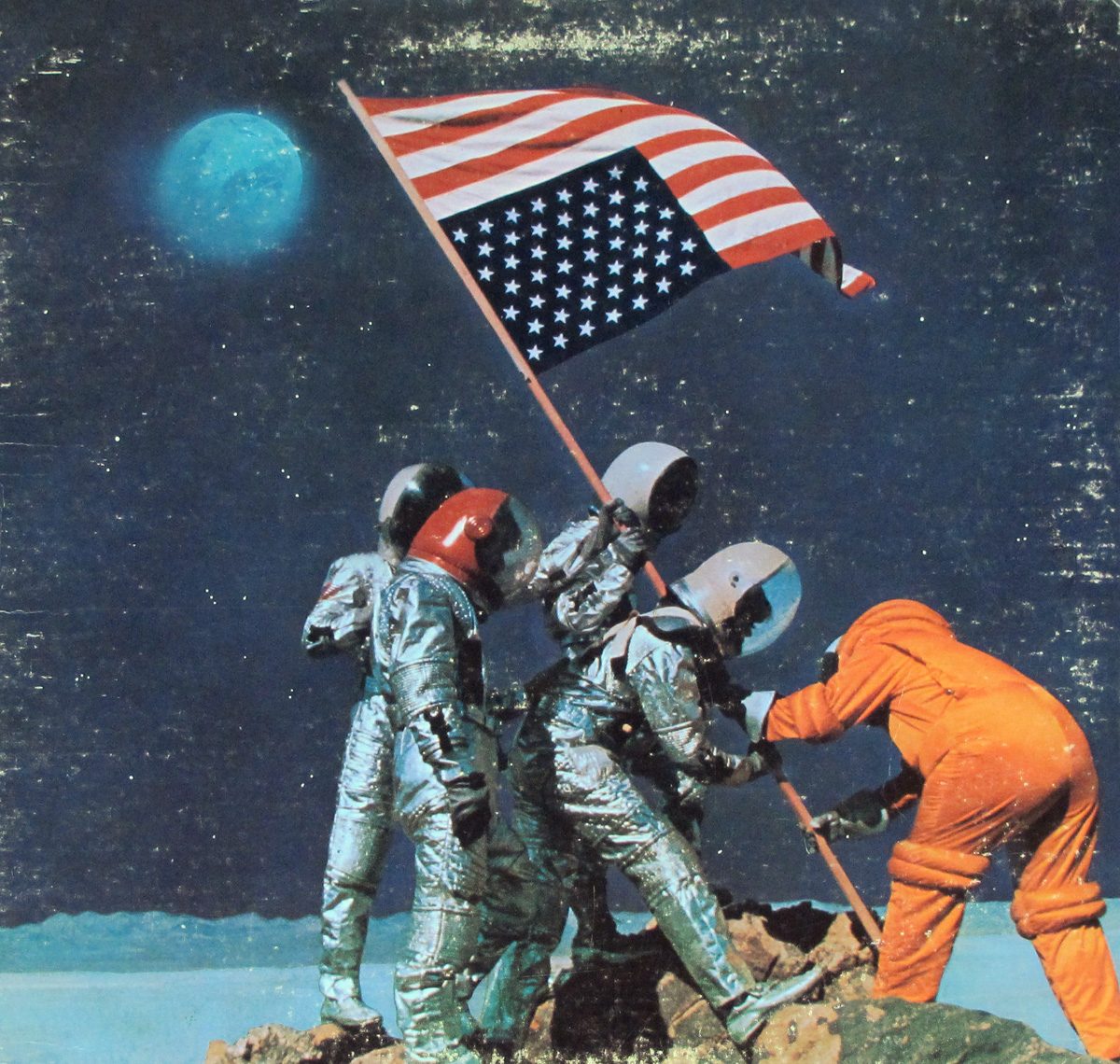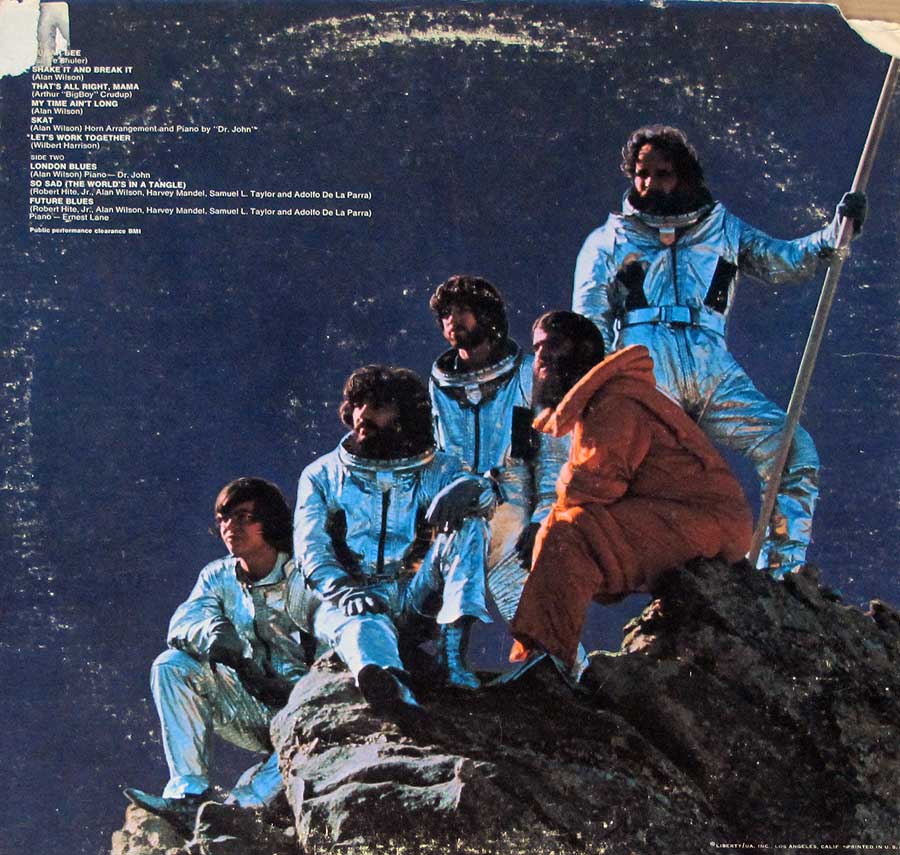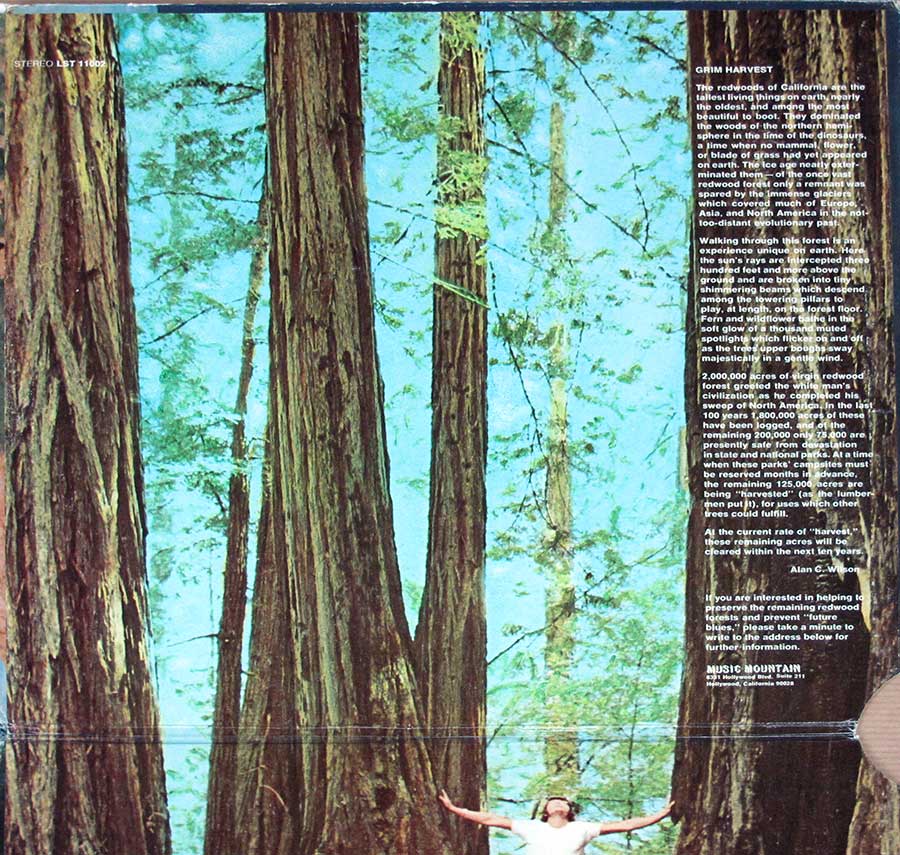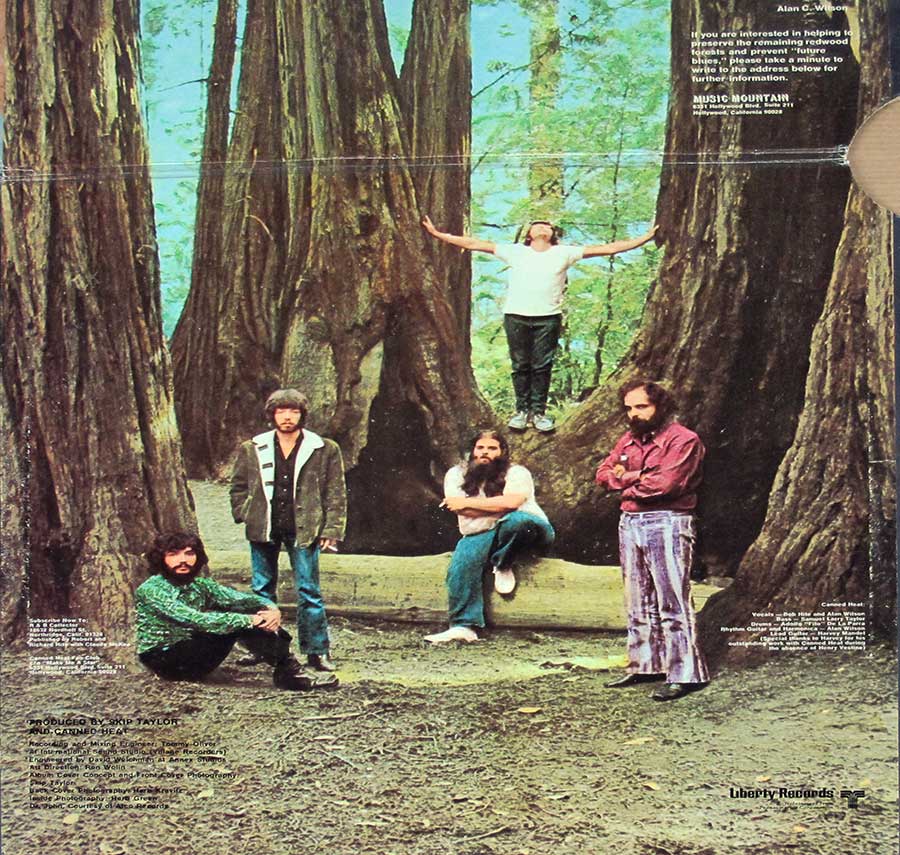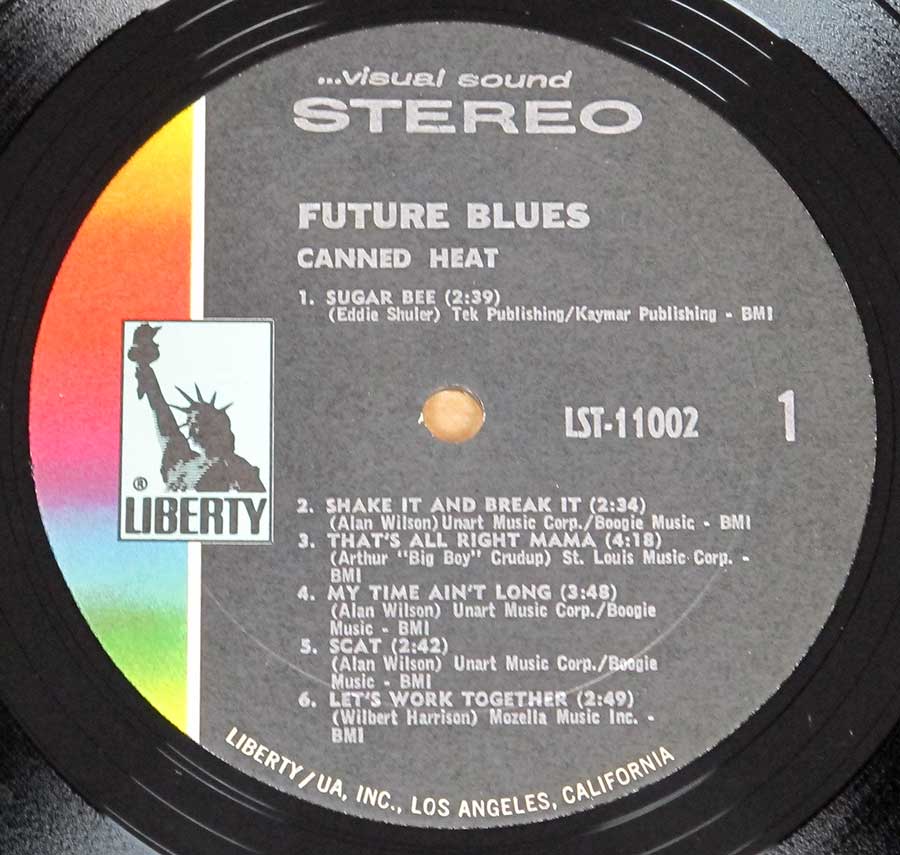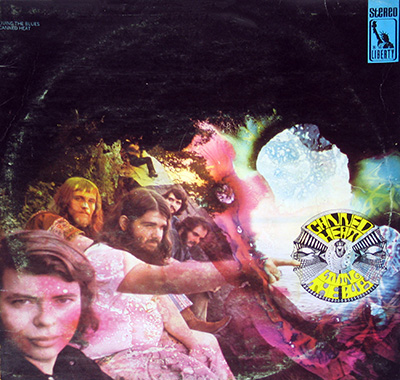"Future Blues" Album Description:
In the world of rock history, certain albums stand as not just milestones but also as definitive representations of an era. Canned Heat's fifth album, "Future Blues", released in 1970, is undeniably one such timeless gem. With its iconic gatefold 12" vinyl LP presentation, this album has etched its mark on the tapestry of music history, reflecting the culmination of Canned Heat's artistic prowess, featuring a lineup that would leave an indelible imprint on the rock landscape.
A Farewell and a New Beginning
"Future Blues" marks a transitional phase for Canned Heat. It was both a goodbye and a new beginning. It served as the last studio album to feature the original member and songwriter Alan Wilson, whose tragic death in September 1970 would forever change the trajectory of the band. Alan Wilson's legacy as a masterful slide guitarist, harmonica virtuoso, and distinctive vocalist is woven throughout the album's tracks, showcasing his profound influence on Canned Heat's sound.
Eclectic Soundscapes
The album's eclectic soundscapes encompass a range of blues-inspired genres, capturing the essence of the band's roots while also pushing their musical boundaries. The cover of Wilbert Harrison's "Let's Work Together" became a breakout hit for Canned Heat, a catchy and infectious anthem that remains relevant to this day. The band's interpretation transformed the track into a timeless call for unity and cooperation.
Collaborative Brilliance
"Future Blues" is not just a showcase for Canned Heat's individual talents, but also a testament to the power of collaboration. The presence of Dr. John, the legendary New Orleans musician, adds a unique and captivating layer to the album. His contributions, both on the piano and in horn arrangements, inject a dose of jazz-infused energy into the mix, enriching the sonic tapestry with his distinctive style.
Behind the Scenes: The Creative Minds
The album's production credits go to Skip Taylor and Canned Heat themselves, underscoring the band's commitment to shaping their artistic vision. The album was recorded in 1970 at Village Recorders in Los Angeles, California. This iconic studio provided the perfect backdrop for Canned Heat to translate their creative expressions into captivating audio magic.
A Roll Call of Musical Excellence
The roster of band members and musicians who contributed their talents to "Future Blues" reads like a who's who of rock and blues luminaries:
- Bob Hite: As the charismatic vocalist, Hite's distinctive voice guided the band's performances, leaving an indelible mark on every track.
- Alan Wilson: The mastermind behind the slide guitar, harmonica, and vocal arrangements, Wilson's artistry permeated the album, making it a tribute to his musical genius.
- Harvey Mandel: Mandel's lead guitar work added a layer of intricacy and depth to the album's sonic landscape, showcasing his technical prowess.
- Larry Taylor: The electric bass provided the rhythmic foundation, thanks to Taylor's expert craftsmanship.
- Fito de la Parra: As the drummer, de la Parra's rhythmic precision and dynamic playing tied the album's grooves together.
- Dr. John: The legendary musician's piano skills and horn arrangements elevated the album to new heights, showcasing his versatility and artistry.
Legacy and Impact
"Future Blues" stands as a lasting testament to Canned Heat's legacy in the world of music. The album's blend of blues, rock, and collaborative brilliance reflects the band's ability to transcend genres and create an experience that resonates with audiences across generations. Each track on the album is a snapshot of the era, capturing both the spirit of the times and the timeless essence of Canned Heat's sound.
